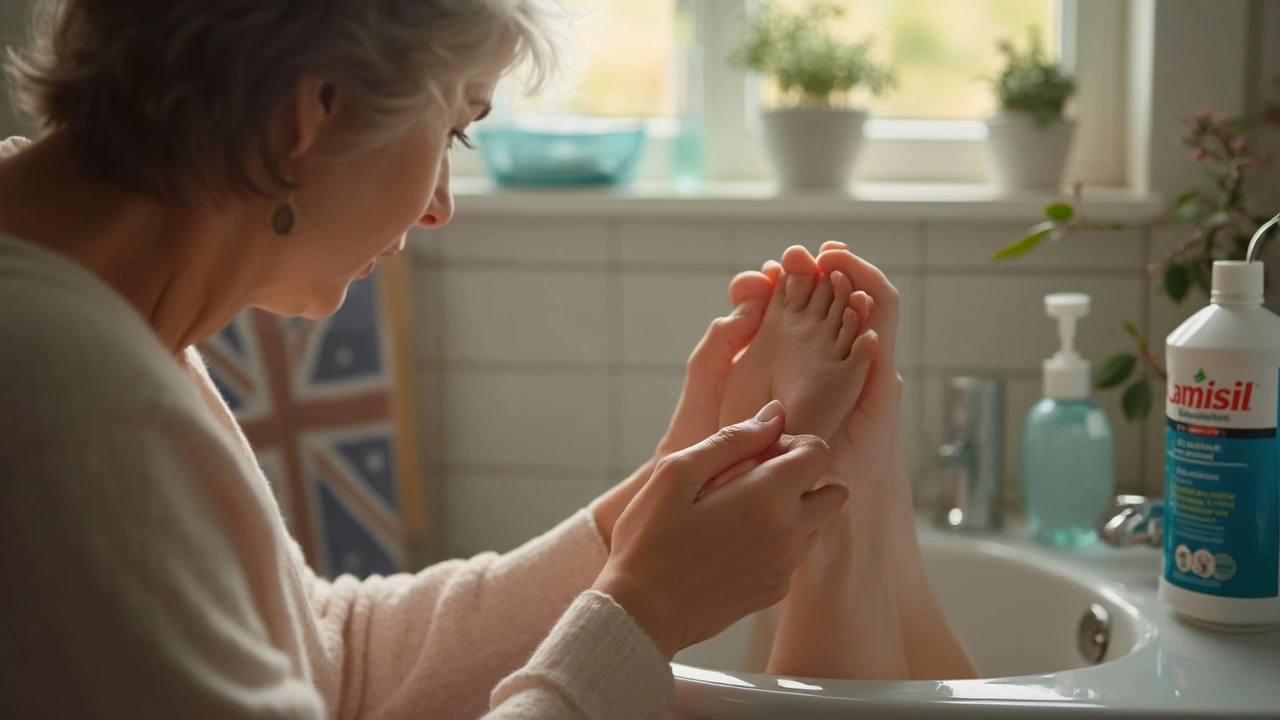Toenail Fungus: What It Looks Like and What Actually Helps
Got thick, yellow, or crumbly toenails? That’s often toenail fungus (onychomycosis). It’s common — about 10% of people get it — and it usually starts after athlete’s foot, a small injury, or from damp shoes. Nail fungus doesn’t always hurt, but it can spread, make nails brittle, and feel embarrassing. The good news: there are clear ways to treat it and stop it from coming back.
How to treat toenail fungus
There are three main treatment routes: topical meds, oral meds, and in-office procedures. Topical options include medicated lacquers and solutions like ciclopirox, efinaconazole, or tavaborole. These work best for mild cases and need daily use for many months—often 6–12 months—because nails grow slowly.
Oral antifungals, like terbinafine (Lamisil) or itraconazole, work faster and cure more often, especially for thick or long-standing infections. Typical courses run 6–12 weeks for toenails, but you won’t see a normal-looking nail until it grows out—sometimes 9–12 months. Doctors usually check liver function before and during treatment with oral meds, so plan a quick blood test.
Other options: laser therapy or removing part/all of the nail in stubborn cases. These are more costly and not always covered by insurance, but they help when medicines fail or when the nail is painful.
Diagnosis and when to see a doctor
A doctor can usually tell from how the nail looks, but a lab test (KOH prep or fungal culture) confirms the diagnosis. See a doctor if the nail is painful, you have diabetes or poor circulation, the infection spreads, or home treatments don’t help after several months. Also see a doctor before trying oral antifungals, especially if you take other meds or have liver problems.
Want quick tips you can start today? Keep nails trimmed short and filed to reduce fungus hiding spots. Dry your feet well after showering and change socks when they get damp. Use breathable shoes and rotate pairs so each gets a full day to dry. Antifungal powders or sprays for shoes and socks help too. Don’t walk barefoot in public locker rooms or pool areas.
A few home remedies like tea tree oil or Vicks get mentioned a lot. Some people see mild improvement, but these aren’t proven cures and should be used alongside proven treatments—not instead of them. If you try home remedies, watch for irritation and stop if the skin breaks.
Prevention beats treatment. Treat athlete’s foot quickly, disinfect nail clippers, avoid shared nail tools, and don’t use nail polish while treating an active infection. If you have risk factors—older age, diabetes, weakened immune system—inspect your feet regularly and talk to your healthcare provider about early treatment.
Toenail fungus can be stubborn, but with the right approach—patience, good foot care, and the right medicine—you can beat it and keep your nails healthy.

Lamisil: Your Guide to Treating Fungal Infections Effectively
Ever wonder how to deal with those stubborn fungal infections lurking around your toes or fingernails? This article breaks down everything you need to know about Lamisil, from how it works to tips for using it right. We’ll cover who should use it, what side effects to watch out for, and why it’s one of the most trusted antifungal medications on the market. Get the inside scoop on avoiding recurring infections, see real-world tips, and learn if Lamisil is a fit for your specific situation. All you need to make informed choices—explained in simple, practical terms.
Read More